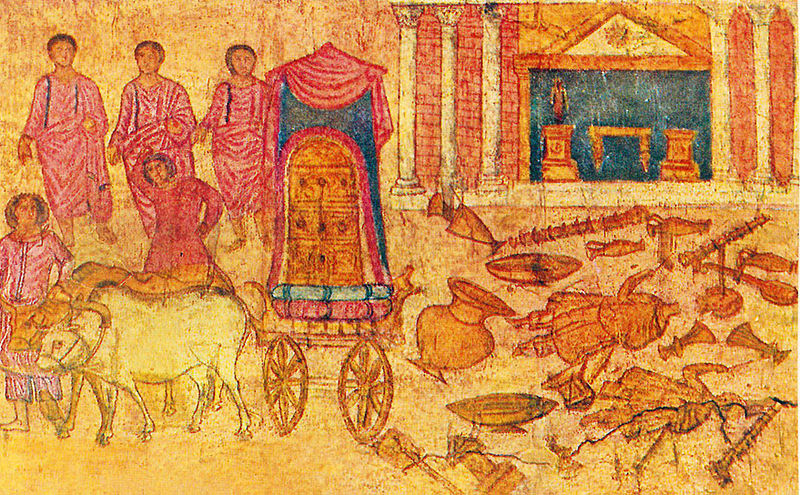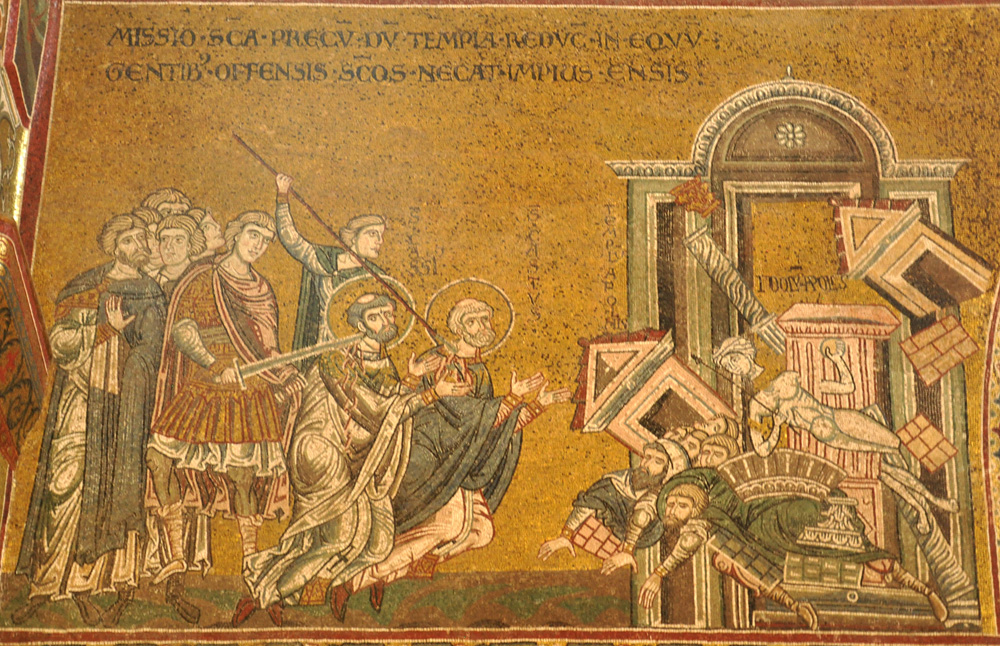

Saints Castus and Cassius Cause the Destruction of the Temple of Apollo

12th-13th century
Mosaic
Cathedral of the Assumption, Monreale, Sicily
The two saints pictured here are labeled CASSIUS and CASTUS. They are remembered as bishops, so in the mosaic they wear stoles and more or less ecclesiastical garments. In the story of their martyrdom a pagan prefect in Campania takes them to the Temple of Apollo to force them to worship. Instead they ask God to destroy the temple and its idols. Their prayer is answered, and in their dismay the pagans put them to the sword (Acta Sanctorum, July vol. 1, 23 and 27).


The collapse of idols at the prayer of saints is a common theme in Christian art and literature and is often pictured just as we see here. The picture at right uses the same vertical-collapse imagery as our mosaic to show the toppling of idols at the approach of the infant Jesus, an episode in the Gospel of Pseudo-Matthew. That text may in turn have been influenced by the story of the collapse of the statue of Dagon in 1 Samuel 5, which is itself the subject of the Dura-Europos fresco, below right.
The inscription above the images says, MISSIO SANCTA PRECUM DUM TEMPLA REDUCUNTUR IN [A]EOVUM. GENTIBUS OFFENSIS SANCTOS NECAT IMPIUS [PRAESES AQUAVIV]ENSIS. – "The holy mission of prayers when the temples were brought down to the ground. The pagans being offended, the impious [prefect of Aquaviv]ensis kills the saints. (ENSIS means nothing. The Capuan Breviary, cited Acta Sanctorum, loc. cit., 22, calls the official in charge a praeses or "prefect" and locates the action in a Campanian city called "Aquavivensis.")
View this image in full resolution.
Mosaic photographed at the cathedral by Richard Stracke, shared under Attribution-NonCommercial-ShareAlike license.